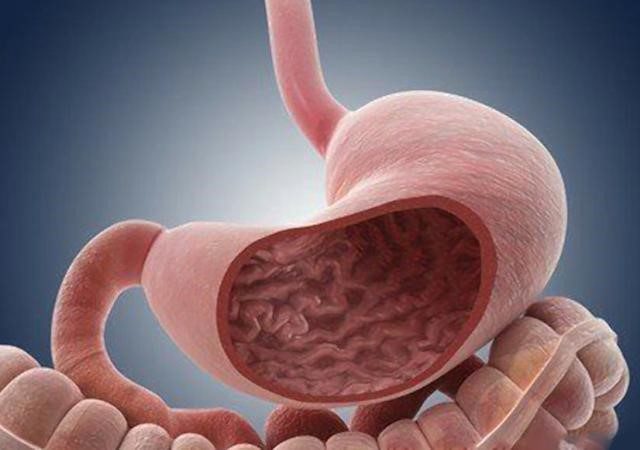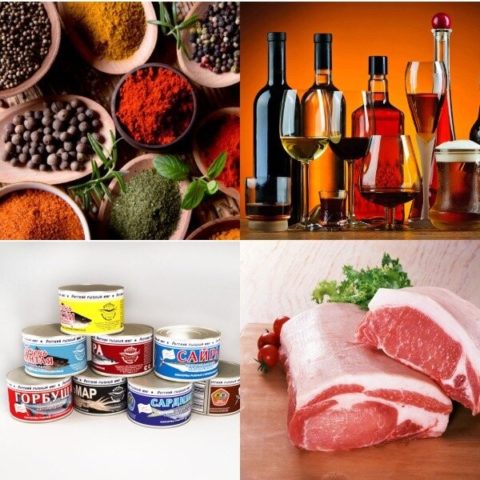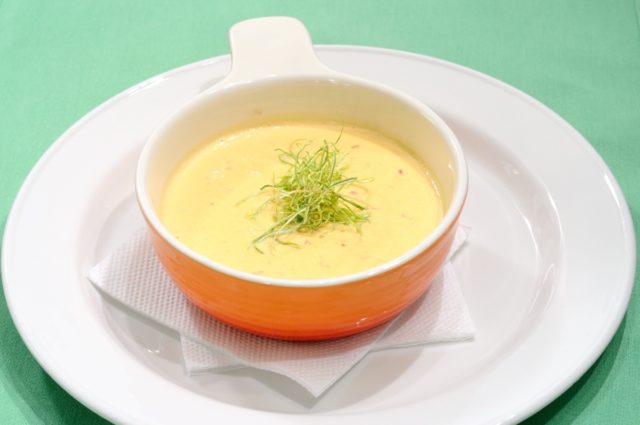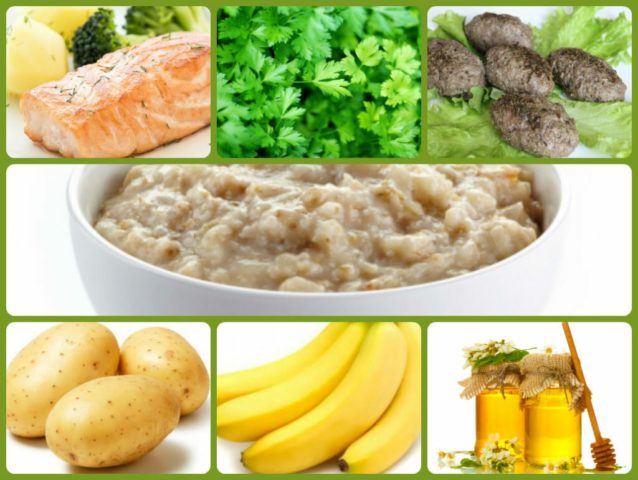Content
The diet for atrophic gastritis should be enriched with proteins, fats and carbohydrates, fiber, contain the required amount of important nutrients, vitamins and minerals. The disease negatively affects the entire digestive tract. With atrophic gastritis, the inflamed mucous membrane becomes somewhat thinner and cannot produce the required amount of gastric juice and enzymes. Thus, with atrophic gastritis, not only the gastrointestinal tract suffers, but the entire body as a whole.
Features of nutrition for atrophic gastritis of the stomach

Atrophic gastritis is the most dangerous form of the disease, since it is the cause of the precancerous condition of the stomach. The danger also lies in the fact that at the first stages of the development of the disease, the clinical picture is not so pronounced. This form of gastritis is characterized by the fact that the cells of the walls of the stomach undergo degeneration, that is, atrophy, lose the ability to work normally. The subsequent stage of atrophic gastritis proceeds under the influence of autoimmune reactions. The disease cannot be completely cured, but the correct therapy, diet, diet, reduces the risk of oncology and a number of other complications. The main symptoms of atrophic gastritis include belching, nausea, flatulence, and a sharp weight loss. In this case, pain is absent at all stages of the pathology.
With atrophic gastritis, many food products are not fully digested and absorbed. As a result, an unprocessed food lump enters the intestinal tract. This causes increased gas formation, colic. Compliance with a certain diet for atrophic gastritis helps to restore digestion, reduce the load on the gastric mucosa.
Nutritional features for atrophic gastritis consist in the following activities:
- switching to fractional meals, at least 5-6 times a day, reducing the portion to 200-250 g;
- additional light snacks are shown between main meals;
- it is forbidden to eat fried, fatty, spicy foods, foods containing coarse fiber;
- food should be grated, chopped, well boiled.
In addition, it is required to maintain a balance of proteins, fats, carbohydrates and calorie intake during the diet.
A therapeutic diet should solve the following tasks during atrophic gastritis:
- stimulate the production of enzymes, gastric juice;
- restore the process of complete assimilation of food;
- reduce the load on the inflamed gastric mucosa;
- normalize the acid-base balance in the organ;
- improve the general well-being of the patient.

It is important to remember that while dieting, the body must receive all the necessary nutrients. Sometimes specialists prescribe vitamin and mineral supplements to their patients.
Diet for atrophic gastritis
The diet prescribed by gastroenterologists is table number 2. She is the most optimal diet.The purpose of the diet is to provide the body with all the necessary nutrients without burdening the stomach.
Diet for gastritis with stomach atrophy provides for the preparation of dishes not steamed or in the form of stewing, boiling, baking food. At the same time, the food should be chopped as much as possible, grinded, as this stimulates the production of enzymes. Since atrophic gastritis has several forms of development, the diet should be adjusted with this in mind.
In the chronic course of atrophic gastritis, long-term treatment and adherence to a diet will be required. Errors in nutrition, stress, drinking alcoholic beverages, smoking can provoke an exacerbation of the disease. In this case, a fairly strict diet and a sparing diet are prescribed.
Focal atrophic gastritis is characterized by the appearance of zones with atrophy on the gastric mucosa. That is, whole areas appear on the organ, which cease to perform their main functions, because the glandular tissue of the stomach degenerates into epithelial. The optimal diet for focal atrophy of the gastric mucosa is No. 1A, then the patient is transferred to diet No. 2. In addition, experts recommend drinking healing mineral water 20 minutes before meals. It stimulates well the intact glands of the organ.
Diffuse atrophic gastritis is a kind of transitional stage of the disease. In this course of the disease, dystrophic changes are not yet observed on the gastric mucosa, however, the first areas of degeneration of glandular tissues are already appearing. The recommended diet for this form of atrophic gastritis is table number 2, which will stimulate the function of the glands. At the same time, the diet is quite complete with the addition of meat, fish and vegetables after proper heat treatment.

As a rule, atrophic gastritis occurs against a background of low acidity. The diet should include foods that sufficiently stimulate gastric acid production. These include lean types of fish and meat, vegetables, fruits and fresh juices. Those products that can cause fermentation processes are prohibited - baking, whole milk.
A diet for atrophic gastritis with high acidity requires the use of foods that can lower it - skim milk, vegetables, milk porridge or water. Mushrooms, radishes, grapes, citrus fruits, and fresh bread should be excluded from the diet.
Allowed Products
After the diagnosis of atrophic gastritis is made, the gastroenterologist helps to compose a menu of products approved for use. These include:
- lean meats in chopped form (veal, beef, rabbit, turkey, chicken);
- low-fat varieties of sea and river fish (cod, hake, pollock, pike);
- chicken and quail eggs (boiled or steamed omelets);
- yesterday's baked goods, simple biscuits, biscuits;
- porridge on water of a semi-liquid consistency (buckwheat, rice, oatmeal);
- low-fat varieties of cottage cheese, cheese, fermented milk drinks;
- pasta, durum wheat vermicelli;
- vegetables (potatoes, squash, pumpkin, broccoli, cauliflower, tomatoes);
- fruits - bananas, sweet apples, melons, persimmons and cherries;
- drinks - chamomile tea, mineral water, compotes, jelly, fruit drinks, weak black tea and green.

The first courses can be cooked in water or in a weak broth, in the form of pureed soups with the addition of noodles, potatoes and other vegetables. You can also eat meat products - pates, low-fat sausages, sausages, boiled tongue. Non-yeast dough pies with rice, cottage cheese, apple are allowed. The diet for gastritis with atrophy takes into account the following consumption rates:
- protein should be about 100 g per day;
- fats - up to 100 g;
- carbohydrates - 400 g per day;
- no more than 10-15 g of salt;
- calorie intake per day up to 2500-3000 kcal.
You can carefully diversify the menu as your condition improves, but you need to listen to the reaction of the gastrointestinal tract to new dishes.
Prohibited foods
It is forbidden to use rich broths for atrophic gastritis, from the first courses - borsch, cabbage soup, okroshka. Fatty fish and meat (pork, goose, duck) are also too heavy food for an inflamed stomach lining. Cereals such as yachka, pearl barley, millet are very tough and are not suitable for cooking first courses or porridge. Legumes cause fermentation in the digestive tract and must be discarded. Thus, the following types of food are strictly prohibited:
- smoked meats, pickles, conservation, pickles, spicy and fatty dishes;
- fat meat;
- fatty fish, salted and smoked varieties;
- dishes cooked with margarine and animal fats;
- fresh bread, various pastries, pastries and cakes;
- fatty dairy products;
- legumes;
- nuts, seeds;
- hot sauces, mayonnaise, ketchup, vinegar, seasonings, spices;
- all raw vegetables, especially onions, garlic, mushrooms, ginger;
- coffee, strong black tea, carbonated drinks, kvass;
- ice cream and chocolate.

Many patients get used to proper nutrition during the diet, since during this period not only the gastrointestinal tract is restored, but also the general condition of the body. During the period of treatment of atrophic gastritis, subject to the diet, women improve their health, appearance, excess weight goes away.
Sample menu for a week
Since the main purpose of such dietary nutrition in the development of atrophic gastritis is to restore the digestive function of the stomach, the diet should consist of simple, bland, non-traumatic dishes. In addition, it is important to eat more often 4 times a day. This will allow not to overload the diseased organ.
Monday:
- breakfast - liquid milk rice porridge, hard-boiled egg, weak black tea;
- snack - pumpkin soufflé;
- lunch - noodles soup, fish cooked in foil, dried fruit broth;
- afternoon tea - yogurt, one cookie;
- dinner - boiled veal with baked zucchini, chamomile tea;
- before going to bed - warm milk.
Tuesday:
- breakfast - porridge in milk with semolina, green tea, a slice of cheese;
- snack - curd soufflé with apple;
- lunch - fish puree soup, steamed chicken cutlet, berry compote;
- afternoon tea - a glass of milk;
- dinner - rice meatballs, rosehip broth, cookies or crackers;
- before bed - chamomile tea.
Wednesday:
- breakfast - weak coffee with milk, steam egg omelet;
- snack - drinking yogurt, biscuits;
- lunch - soup with meatballs, baked fish with broccoli, green tea;
- afternoon tea - baked banana;
- dinner - mashed potatoes with chicken breast, berry jelly;
- before going to bed - fruit drink.
Thursday:
- breakfast - cheesecakes in a double boiler, weak black tea;
- snack - low-fat kefir with cookies;
- lunch - pumpkin cream soup, baked turkey, cocoa drink;
- afternoon tea - fruit jelly, cookies;
- dinner - fish in foil with vegetable sauté, still mineral water;
- before going to bed - warm milk.
Friday:
- breakfast - milk oatmeal, sweet herbal tea, a slice of cheese;
- snack - peach pudding, mineral water;
- lunch - cauliflower cream soup, boiled chicken breast, berry juice;
- afternoon tea - curdled milk, biscuits;
- dinner - cottage cheese casserole, banana, weak black tea;
- before bed - tea with chamomile.

Saturday:
- breakfast - soft-boiled eggs, coffee with milk;
- snack - berry jelly, cookies;
- lunch - beef meat, boiled cauliflower with egg, yogurt;
- afternoon tea - cottage cheese with sour cream;
- dinner - boiled fish, pumpkin puree, sweet tea with cookies;
- before going to bed - warm milk.
Sunday:
- breakfast - rice porridge with dried fruits, tea with milk;
- snack - casserole with honey and cottage cheese;
- lunch - potato soup, steamed turkey cutlet, buckwheat, dried fruit compote;
- afternoon tea - chamomile tea with cookies;
- dinner - milk soup, baked zucchini in foil with veal, green tea;
- before going to bed - a wild rose broth.
This menu is an example of a diet for atrophic gastritis.
Conclusion
Diet for atrophic gastritis is as important during treatment as taking medication. This form of gastritis is quite insidious, as it can provoke the oncology, and all stages of the disease pass without any serious symptoms. That is why, in case of gastritis with atrophy, it is important to combine proper nutrition with drug treatment.

